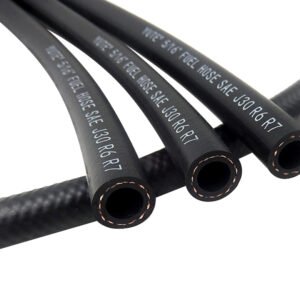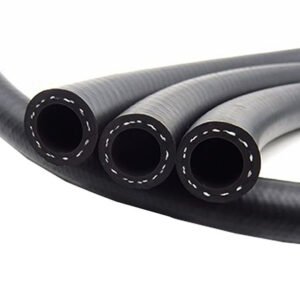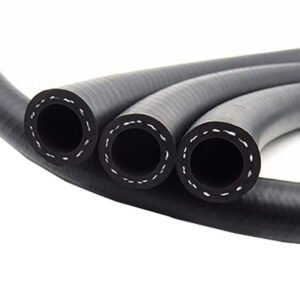Hose Breosla
Na píobáin breosla rubair, Táirgeadh monaróir Kinglin, is píobáin braidáilte sreinge cruach iad. Idir an dá linn, an píobán rubair comhdhéanta de ciseal rubair istigh, ciseal braid sreinge cruach agus ciseal seachtrach rubair. Ag an am céanna, tá sé oiriúnach chun sreabhach hiodrálacha a iompar, mar alcól, ola bhreosla, ola bhealaithe, eibleacht, srl.
An ghné is mó de (rubair) Is é píobán a bendability i gcomparáid le píopa crua. Go háirithe, athraíonn dearadh píobáin de réir na gcoinníollacha oibriúcháin agus na ceanglais feidhmíochta. Áirítear ar pharaiméadair choitianta méid, brú, meáchan, fad, lúbadh, marthanacht ceimiceach, srl. Clúdaíonn réimse iarratais píobáin tionsclaíoch táirgeadh tionsclaíoch éagsúla, réimsí déantúsaíochta agus cúrsaíochta. Athúsáidtear i peitriliam, tionscal ceimiceach, long, duga, tancaer, talmhaiocht, bia, dí, leighis agus tionscail eile. Freisin, tá sé infheidhme freisin maidir le huisce te agus fuar, gal, aeráil, fuaraithe, cosaint dóiteáin agus brú hiodrálacha.
Comparáid a dhéanamh idir píobán rubair agus PVC
1. Mar gheall ar nádúr PVC agus plaistigh eile chomh maith, níl siad feiliúnach go maith le húsáid le haghaidh breosla gáis nó ceirisín.
2. Déanann PVC agus plaistigh eile dífhoirmiú go héasca i dtimpeallachtaí teocht ard, agus féadfaidh sé sceitheadh nó réabadh.
3. Chomh maith leis sin, na plaistigh a úsáidtear chun solúbthacht leá PVC a choinneáil i láthair ola, ag déanamh an píobáin righin.
4. Má tharlaíonn sé seo agus tá iallach ar an píobán a lúbadh, féadfaidh na snáitheanna athneartaithe briseadh nó crack an píobáin. Ar deireadh as a dtagann sceitheadh nó pléasctha.
5. Ó thaobh sábháilteachta de, i gcomparáid le rubair, tá spás níos mó ag plaisteach idir ceimiceáin. Dá bhrí sin, nuair a iompraítear móilíní beaga cosúil le LPG trí phíobáin phlaisteacha, d'fhéadfadh móilíní gáis dul isteach sna píobáin.
Ag taispeáint go léir 6 torthaí





